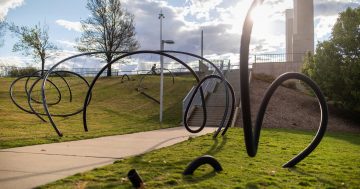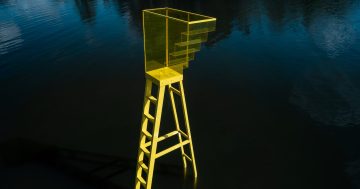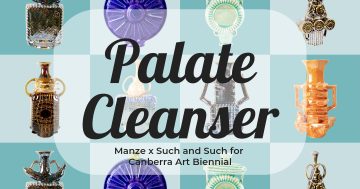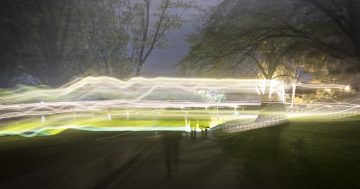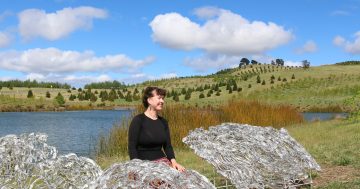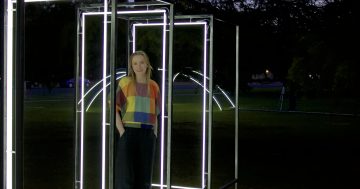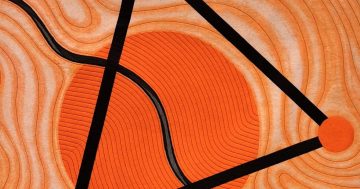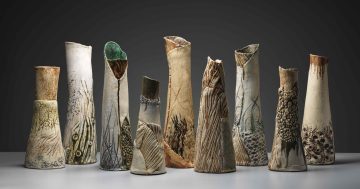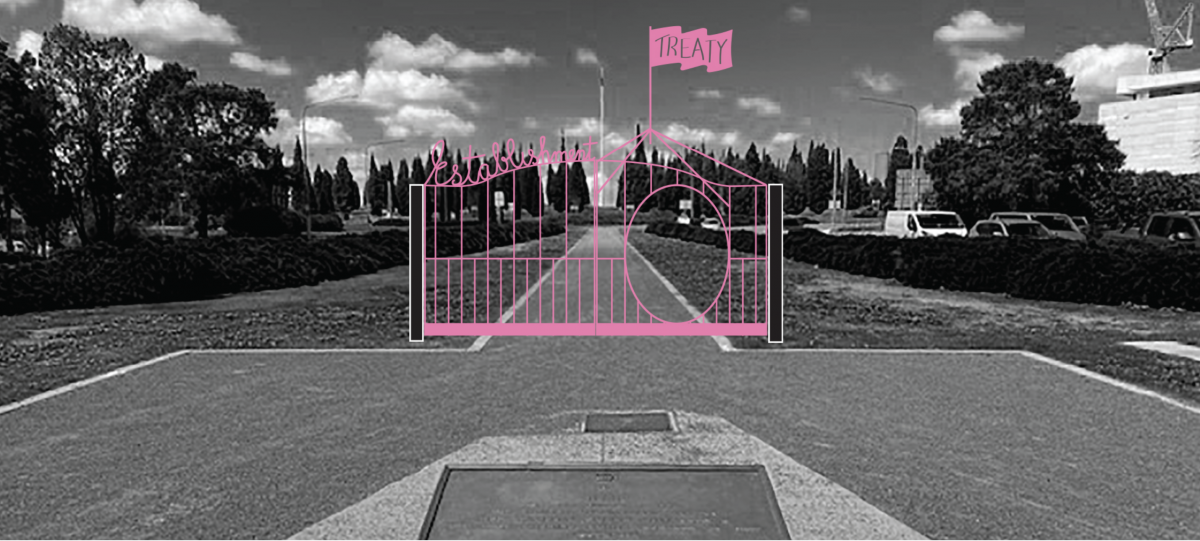
A pair of ornate gates calling for a treaty will be placed on Northbourne Avenue. Photo: Supplied.
The art isn’t inside gold frames. It’s not in a gallery. You don’t have to be quiet and you are more than welcome to have an argument with your friends over whether you like it or not.
Originally known as Contour 556, the Canberra Art Biennial returns in October for a month of thought-provoking, sometimes mystifying and constantly engaging public art installations.
Now in three locations, art will appear not only on the original contour 556 (the height above sea level of Lake Burley Griffin) but also contour 656 (the Arboretum) and 606 (the University of Canberra).
Artists respond to the designed city of Canberra, represented by Australia’s political, cultural and physical history.
“It’s putting things in front of people’s faces on their regular walks, and then making them think twice about what they saw or didn’t see the day before or yesterday or tomorrow,” says director Neil Hobbs. He began Contour 556 as a PhD project and continues as its creative director.
“It just makes you think a little bit deeper about the space you’re in and about the fact that things change, they aren’t always the same. Somewhere like Civic Square doesn’t have to be like this forever. It hasn’t been like this forever. And it might change again soon, who knows?”
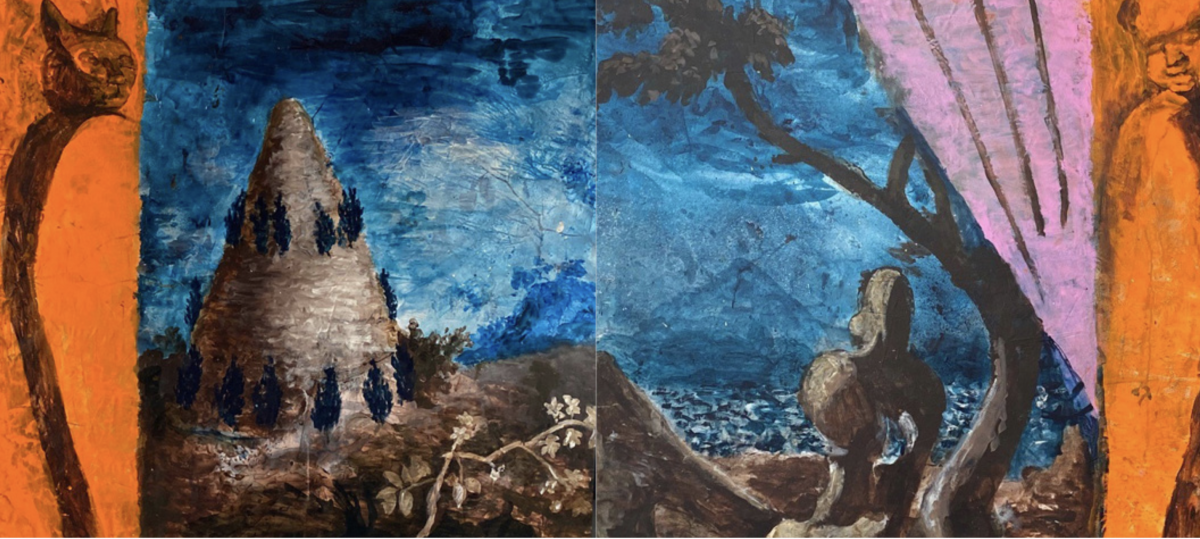
Tony Clark’s painting turns Civic into a stage set. Photo: Supplied.
Locations and artists have both mushroomed since the Biennial’s inception in 2016. There are now 70 artists represented, all reflecting in some way on Canberra’s history over the past century and the past 50,000 years. Sixty artworks appear in 21 different locations, some of them very public while others will be discovered.
Some of the references will be stark: repurposed bushfire signs from Ian Hubbard warning of catastrophe ahead, a pair of gates installed by Elvis Richardson on Northbourne Avenue flying treaty and settlement flags.
Others are more whimsical: Nigel Dobson and Tom Buckland have made a work about Canberra’s reported UFO sightings – a flying saucer hovering above Lake George, a spherical object landing in a Tuggeranong paddock, an armada of silver cigar-shaped juggernauts skimming Queanbeyan rooftops and startling residents.
Others works point to the design elements that made modern Canberra. In Civic Square, for example, artist Tony Clark’s paintings have picked up the Italian references in the Square’s architecture.
“Civic Square has City Hill with its conifers, and the way the painting is positioned, you can just see the tip of Mount Ainslie in the background,” Neil says.
“Tony’s been living in Italy for the last 20 or 30 years, so the work becomes rich and really anchored in the place by an artist who also has a long history in Canberra.”
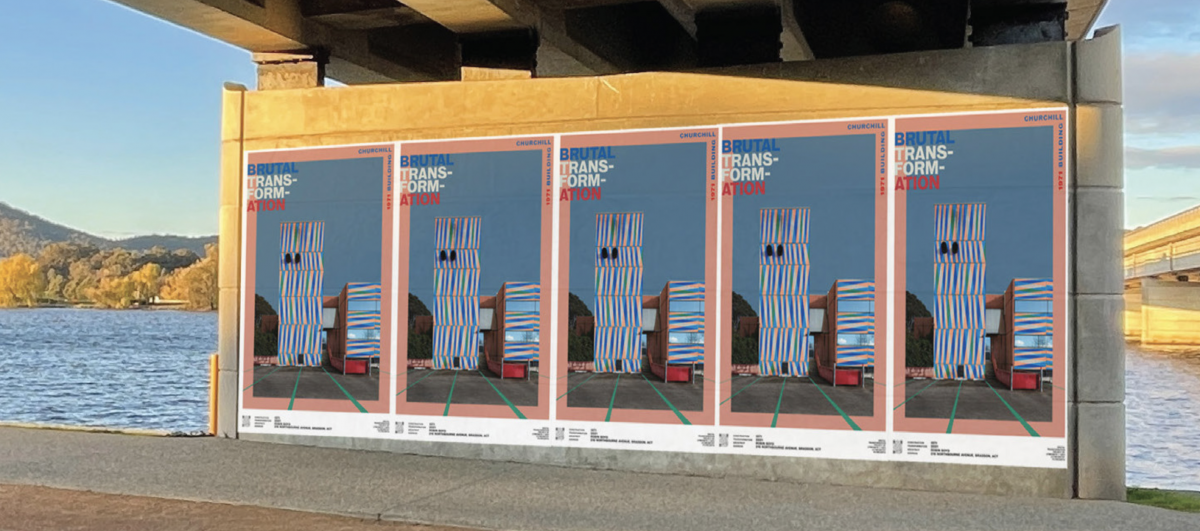
Lymesmith’s work examines Canberra’s Brutalist architectural legacy. Photo: Supplied.
There’s also a strong performance element: Canberra Dance Theatre will perform on their opening night at Petrie Plaza and there are artist talks and events throughout the month. A symposium at Kambri, forest bathing at the Arboretum, guided tours by the Localjinni collective and a contour lake cruise are among the other interactive events.
The Biennial sits neatly between Floriade and Design Canberra, each focusing on design, the landscape, Canberra’s natural beauty and the city’s creativity. Together they showcase part of the city’s identity that is familiar to locals but perhaps lesser known nationally.
“There are lovely new leaves on all the trees, by the lake, the pears are out in flower and then they get that lovely soft green,” Neil says.
“The Arboretum is a lovely, lovely spot at this time of year and there’s a real sense of optimism and hope with the new season. It’s an incentive for people to explore.”
Under Wendouree Drive, photographer Sammy Hawker will have works pasted onto bridge pylons and Sonya van de Haar’s work as Lymesmith includes poster paste-ups in the Parliamentary Triangle, adorning the Kings Avenue Bridge.
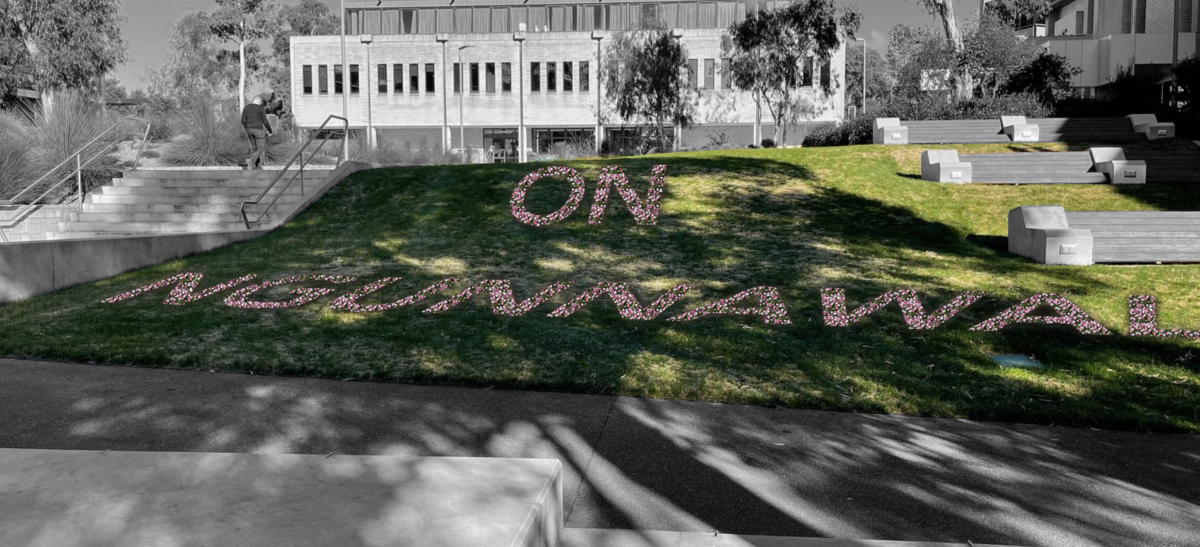
The University of Canberra’s work will combine traditional burning and planting. Photo: Supplied.
At the University of Canberra, Miranda Cunningham and Sueanne Weare have worked with the United Ngunnawal Elders Council on We are on Ngunnawal Country, a project that explores cultural burning, political activism and landscape planting.
Letters will be burnt into the ground and then seeded with Billy Buttons, Paper daisy and Pink and White Everlastings.
In the Arboretum’s nationally renowned bonsai and penning collection, Nathan Nhan’s pots will nestle among the specimens, while at the University of Canberra, Cate Consandine’s Glow Shadow will transform the unused Student Residences designed by John Andrews with illuminated windows and shadow performances.
Neil says the Biennial is for the whole Canberra community but is also an attractive prospect for interstate visitors. He thinks that the event could certainly develop in the direction of European biennials that run for several months and become a major tourist attraction.
“It takes a lot of funding to run something like for what’s still a small organisation, but yes, that would be amazing!” he says.
The Canberra Art Biennial runs from 1 to 29 October.












